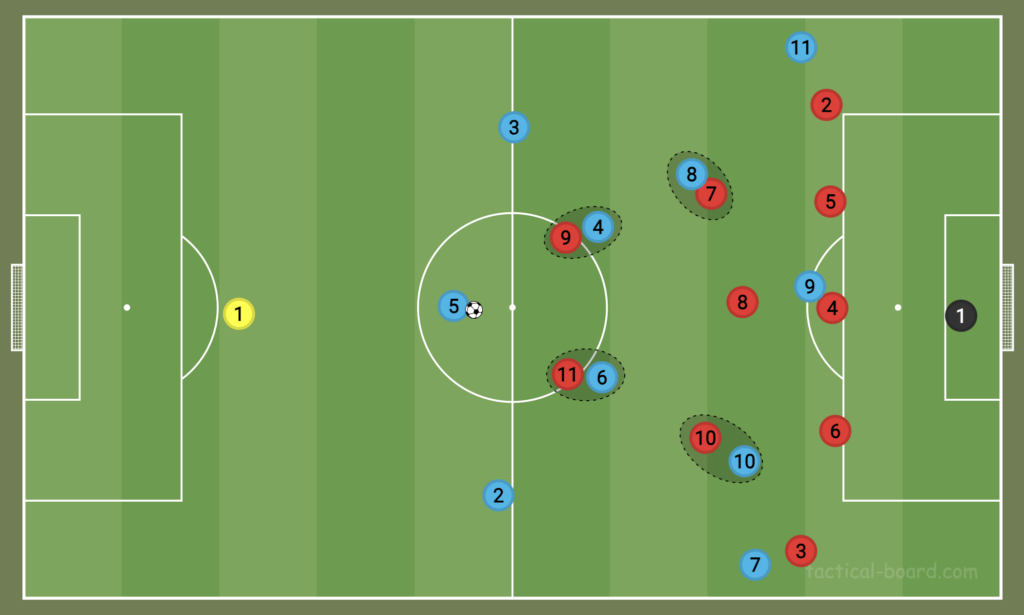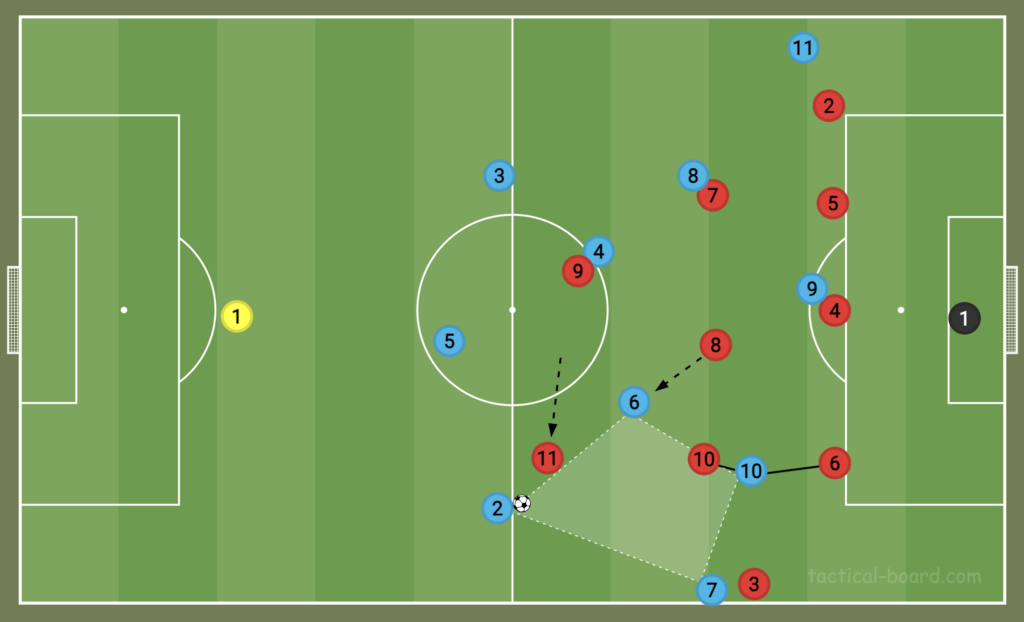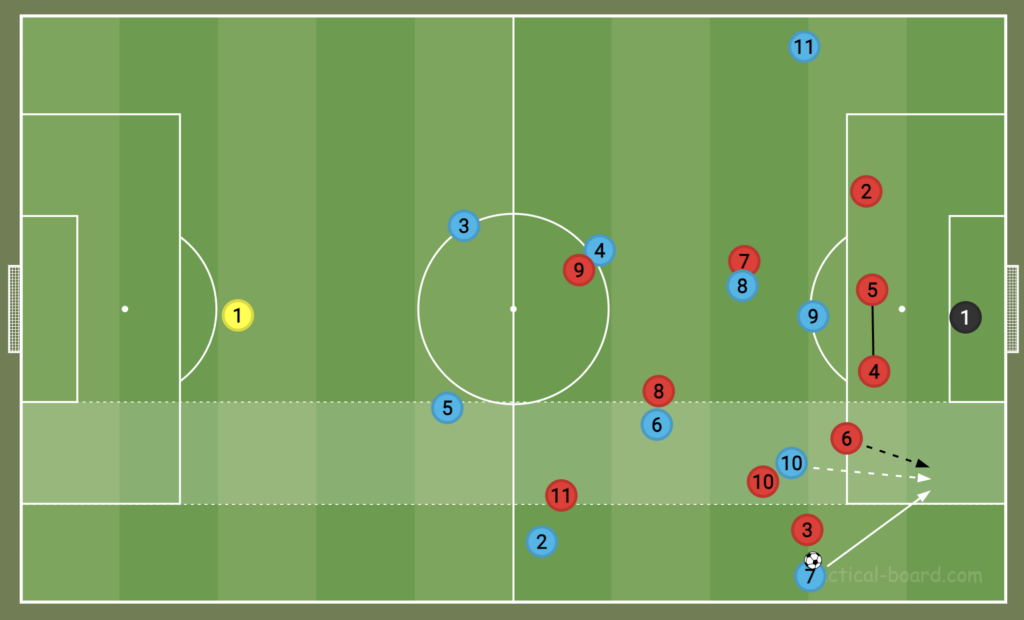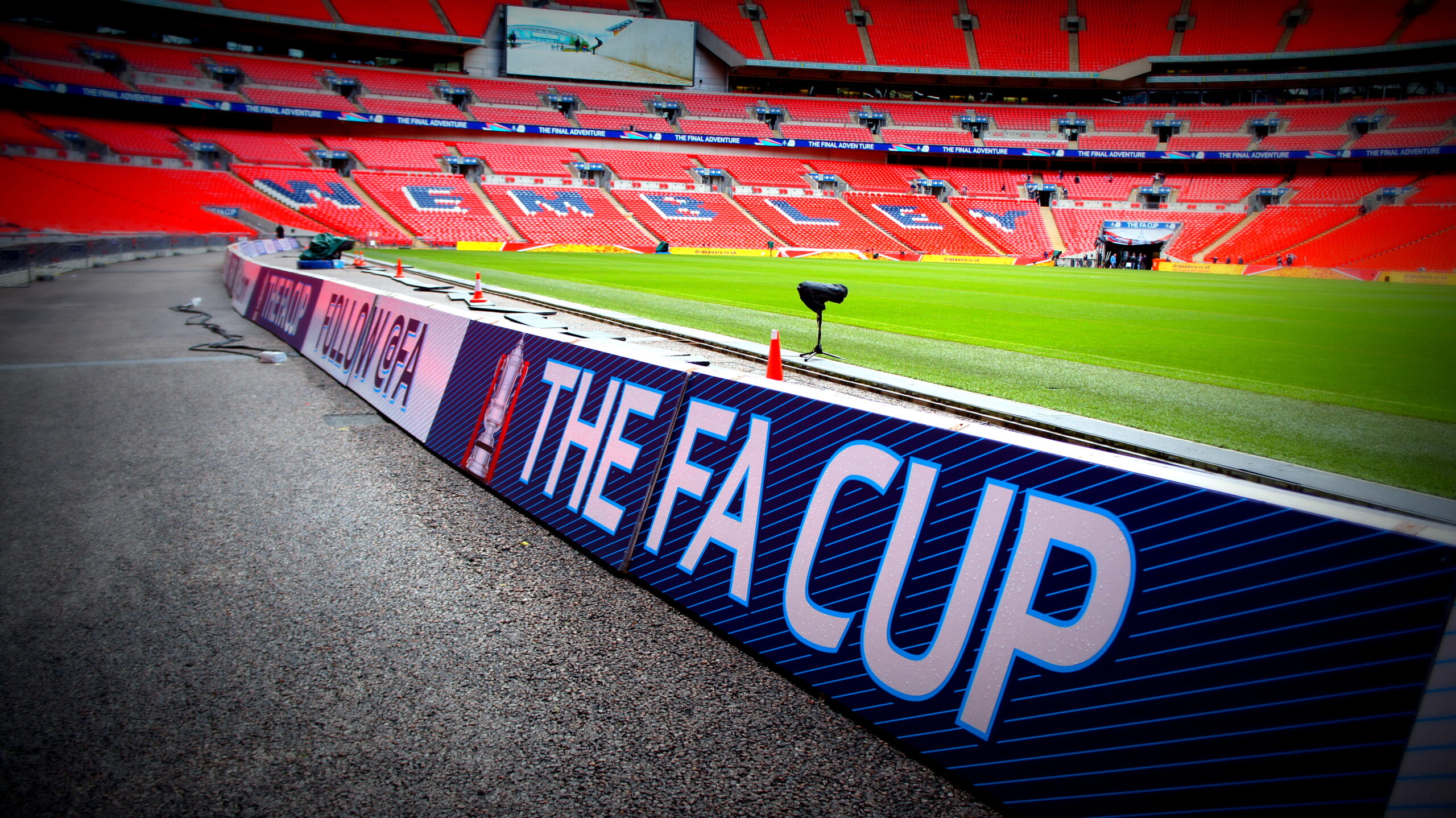Our tactics writer Aidan Smith, from Tactically Speaking, and videographer Ewan Harkness explain why Manchester United need to deploy a back-five to deal with Manchester City’s biggest threat.
Erik ten Hag’s Man United have already lost three Manchester derbies this season, with Phil Foden and Erling Haaland running the show in their two league meetings. So how must United set up if they want to stifle their city rivals? Well, a back-five system might be in order.
Last time the sides faced each other, United’s press was clever, but they struggled when City played the ball wide. This time, a trophy is at stake, and United need to stop the link-up between City’s wide players and their midfielders.
A 5-3-2 formation has worked well for teams trying to keep Pep Guardiola’s dominant outfit at bay. Usually this shape fails to deal with opposition full-backs, but City have none — preferring to play with centre-backs, midfielders, and a traditional front-three.
The key to this tactic working will be man-marking. If United can man-mark each of City’s four midfielders, then it won’t matter that Guardiola’s side try to disrupt United’s defensive shape.

United will have to pin their strikers to City’s defensive midfielders so they can’t receive passes into the middle of the pitch, and pin their wide central midfielders (likely to be Kobbie Mainoo and Bruno Fernandes) to City’s attacking No.10s for the same reason.
When City begin to play the ball out wide, United’s closest striker must close down the player on the ball (cautiously, and without charging forward unarmed) as shown below, at which point their defensive midfielder will have to jump to press City’s pivot player. This movement involves a change of man-to-man marking, and would have to be slick.

Once out wide, City love to commit four players to keeping the ball, and progressing on the flank. In March, this killed United.
They couldn’t deal with underlapping runs from Kevin de Bruyne, and that’s why a back-five is a must this time around. The three centre-backs means they can provide cover in the half spaces, and they can track these underlapping runs.

It’s important to note that Man United must still be man-marking each of City’s four midfielders, but that any runs in behind the defensive line can be tracked by centre-backs. Lisandro Martínez’s return from injury is a huge boost in this area. Nimble but aggressive, he’ll be well-positioned to deal with any runs from the likes of De Bruyne or Foden.
Related Content




